Earth stars are a bizarre group of mushrooms that show just how weird fungi and the natural world can be. These mushrooms belong to the puffball family and have a distinctive two-layered star-shaped fruiting body that looks more than a bit alien. False earth stars are incredibly similar to true earth stars and it takes close examination to tell them apart. This guide covers North America’s most common earth star and false earth star species.
- Scientific Name – Earth Stars: Geastrum
- Scientific Name – False Earth Stars: Astraeus
- Edibility: varies
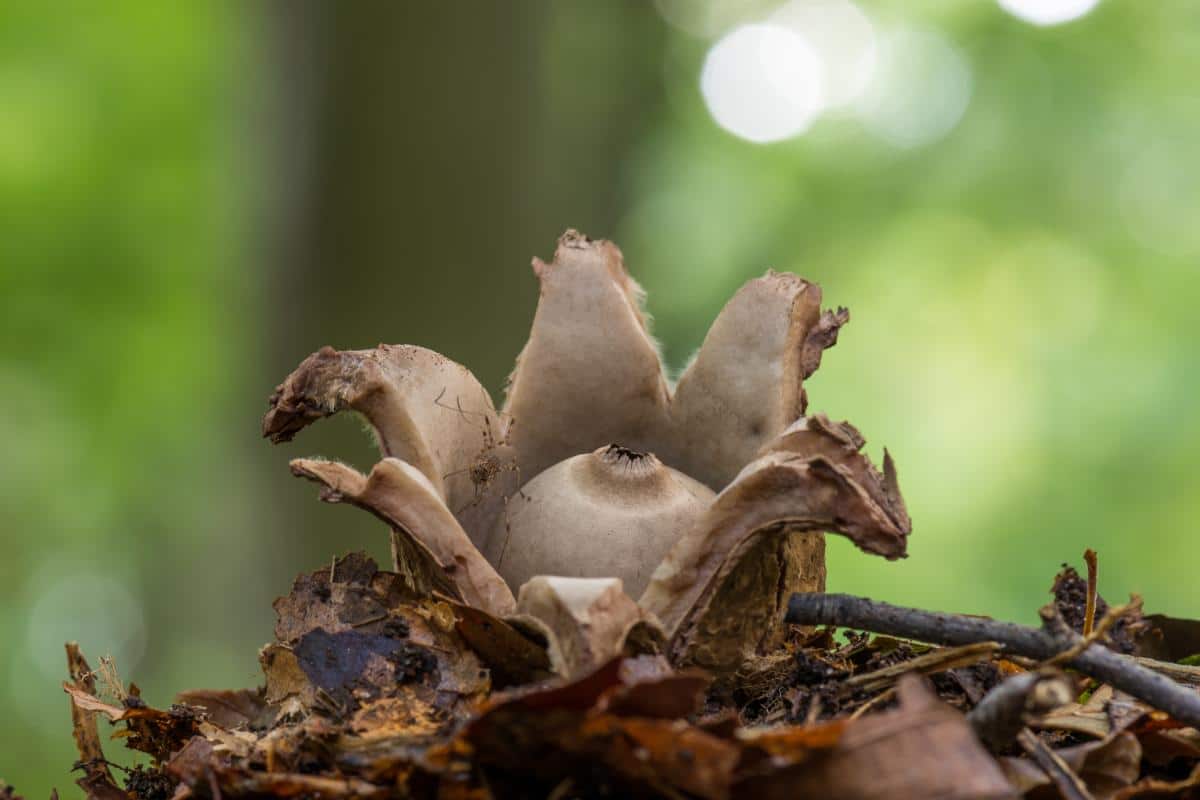
Jump to:
- All About Earth Star Mushrooms
- All About False Earth Star Mushrooms
- Earth Star Mushroom Identification
- Common North American Earth Star Species
- False Earth Star Mushroom Species
- Earth Star Mushroom Lookalikes
- Historical and Traditional Uses of Earth Star Fungi
- Medicinal Properties of Earth Star Fungi
- Common Questions About Earth Star Mushrooms
All About Earth Star Mushrooms
Earth star mushrooms belong to the puffball family and possess a unique two-layered structure that gives them their characteristic star-like shape. The mushrooms belong to the genus Geastrum, which is part of the family Geastraceae. The name Geastrum comes from the Greek words “geo,” meaning earth, and “aster,” meaning star, referring to the star-like appearance of these fungi when mature.
The genus Geastrum itself is estimated to contain up to 120 species. Previously, it was thought there were only about 50, but more recent DNA analysis caused a significant increase. Identification of earth star species can be challenging due to similarities in physical features.
Earth stars are saprobic, meaning they gain their nutrients from decomposing organic material. They also help break down forest debris to make nutrients more accessible to other plants and animals.
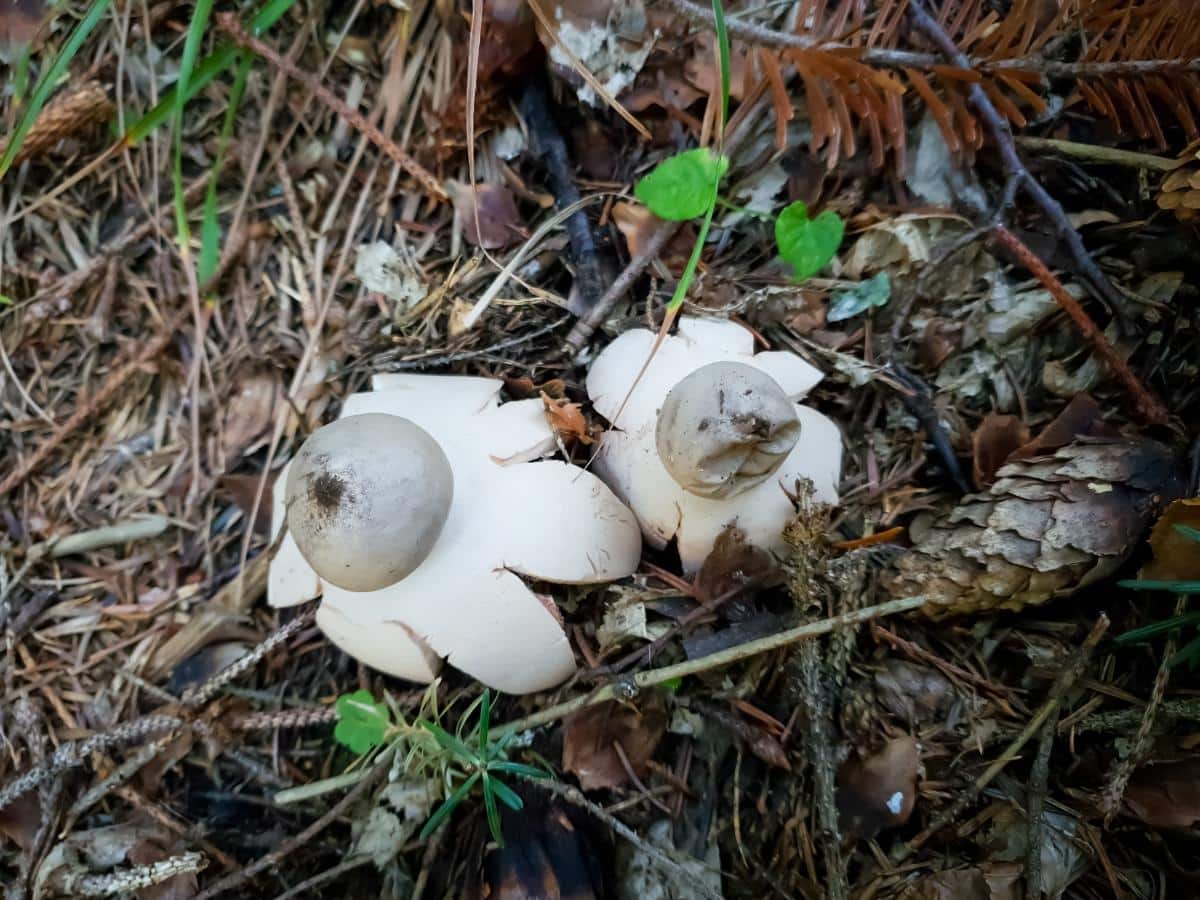
All About False Earth Star Mushrooms
False earthstars (Astraeus specie) look almost identical to earth stars in many cases, but they have a unique adaptation that sets them apart. The arms, or rays, open and close in response to moisture. During hot, dry periods, the arms close up to protect the spore sac. When it rains, or there is moisture in the air, the arms open up to receive it. This special function is called hygroscopy and is used by many plant and animal species to retain hydration.
As wild as it sounds, false earth stars are not closely related to true earth stars. Astraeus species are actually part of the Boletales family (Boletes!). This is yet another neat example of convergent evolution. There are currently 9 species in the Astraeus genus, four of which occur in North America.
Like true earth stars in the Geastrum genus, false earth stars are comprised of an inner spore sac surrounded by an outer shell. This outer surface breaks open in maturity, creating several arms or rays. False earth stars are ectomycorrhizal; they source nutrients from the living roots of shrubs and trees.
The scientific name Astraeus is from Greek Mythology. Astraeus (or Astraios) is a Greek deity and the father of the four wind deities. Astraios means “starry” in Greek.
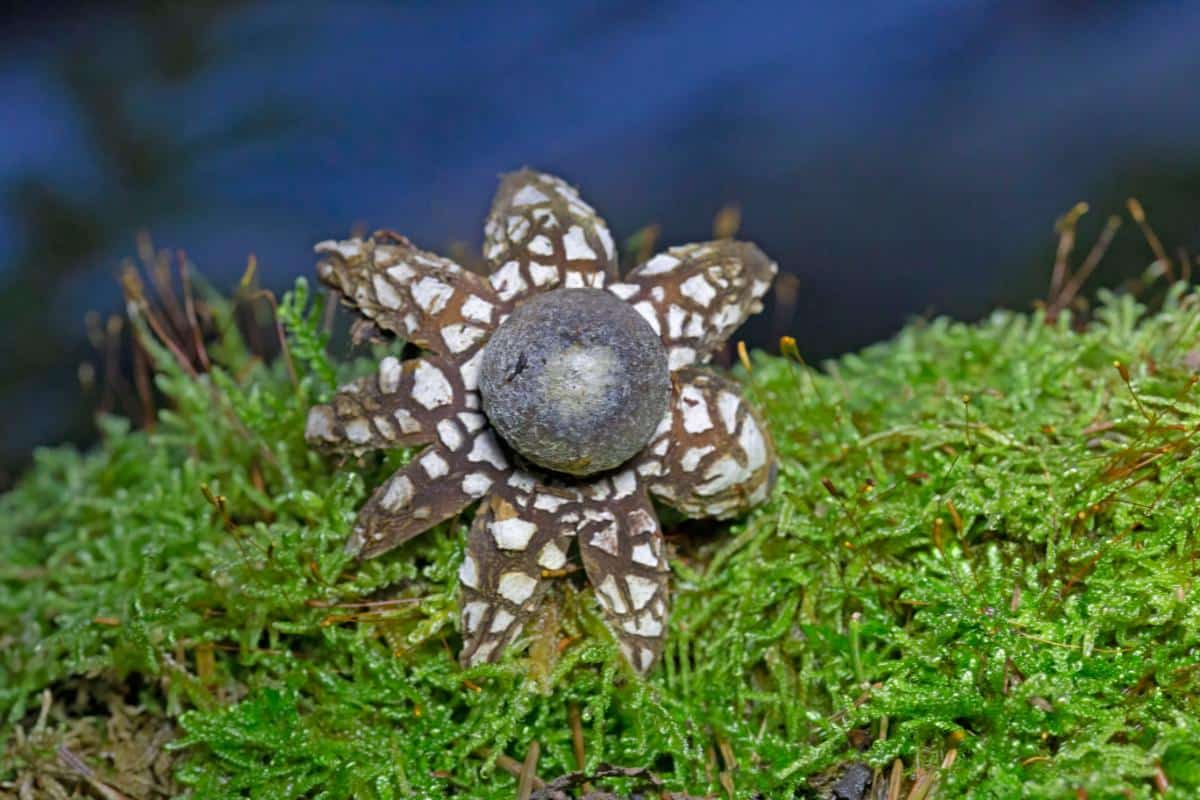
Earth Star Mushroom Identification
Season
The fruiting bodies of earth stars typically appear in late summer and autumn, often after periods of rain. Their appearance can vary depending on the species and local climate conditions, though. Earth stars may be visible year-round in some regions, with their tough, persistent fruiting bodies lasting for extended periods. On the west coast of North America, Geastrum saccatum is commonly found from September to December, while in other parts of the continent, it appears from July to October.
Habitat
Earth stars grow on the ground primarily under hardwood and conifer trees. They prefer leaf litter and humus-rich soil. Earth stars can survive in harsh conditions, including nutrient-poor, sandy, or loamy soils. They even grow in dry forests and desert-like environments. These mushrooms never grow from trees or wood.
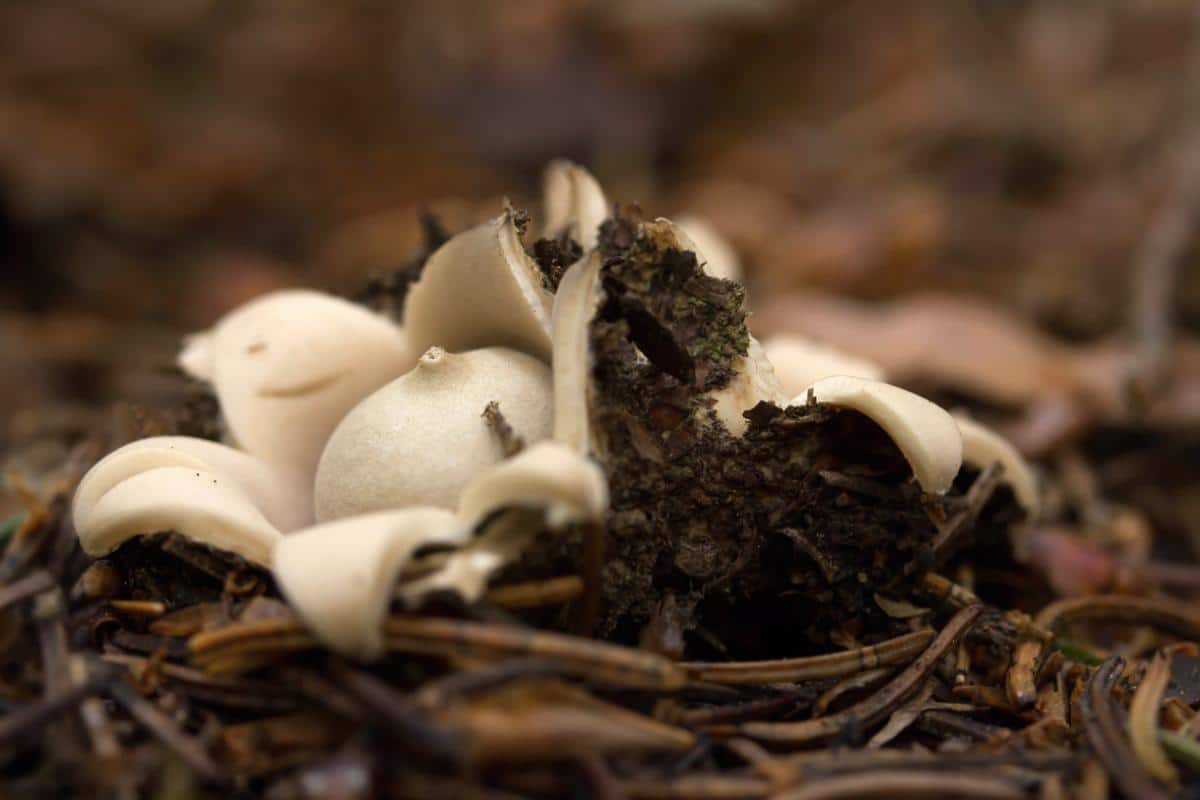
Identification
Earth stars range from .75-2 inches across for smaller species like Geastrum saccatum, to up to 4.75 inches for larger ones like Geastrum triplex. The texture and color of the rays and the presence of any cracks or patterns give valuable clues for identification. Still, though, they can be challenging to differentiate.
Young earth stars appear as small, roundish balls partially embedded in the soil. They look a lot like small puffballs at this stage. As they mature, the outer layer of tissue, called the exoperidium, splits open into several pointed, triangular segments. These segments, called arms or rays, spread outwards and downwards, forming a star-like pattern. This opening process reveals the inner spore sac—a big “ta-da!” moment in nature.
At the center of the earth star is a spherical or egg-shaped structure known as the endoperidium or spore sac. This sac contains the gleba, a mass of spores and fertile tissue. When young, the gleba is white and firm. As the mushroom matures, though, the spores turn brown and powdery. On top of the spore sac is a small pointed beak called the peristome, which has an opening through which spores are released.
This adaptive mechanism allows the mushroom to disperse its spores more effectively. The star-like rays of the exoperidium lift the spore sac above the ground and allow for better spore dispersal by wind or rain splash.
Earth star mushrooms come in a range of sizes and colors. The fruiting bodies typically measure .25-4 inches in diameter from tip to tip when fully expanded. The outer surface of the rays is often rough in texture and can vary in color from grayish-brown to black. The inner spore sac is usually lighter in color, ranging from light gray to tan.
The spore print ranges from brown to reddish-brown, and doing a spore print can help narrow down the species.
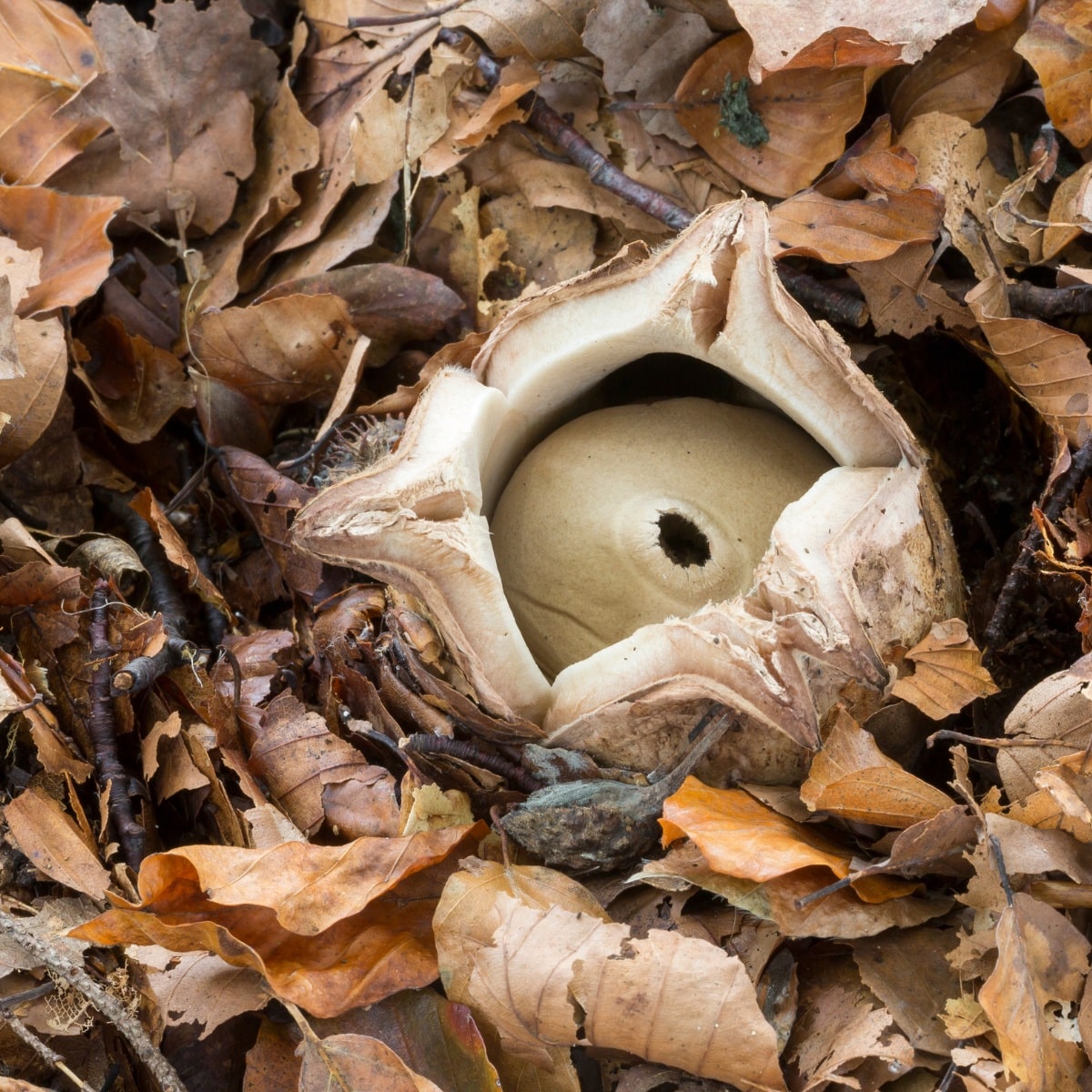
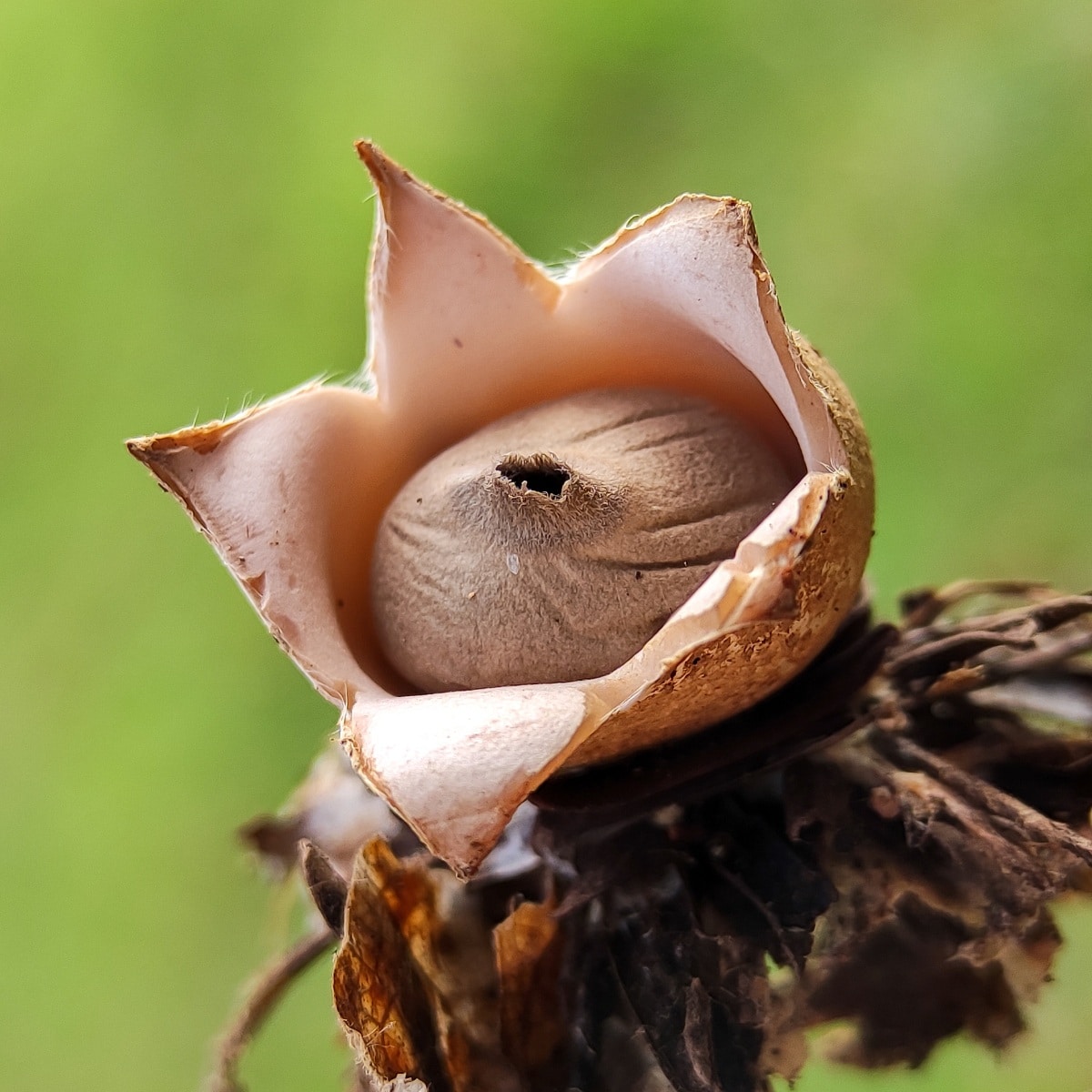
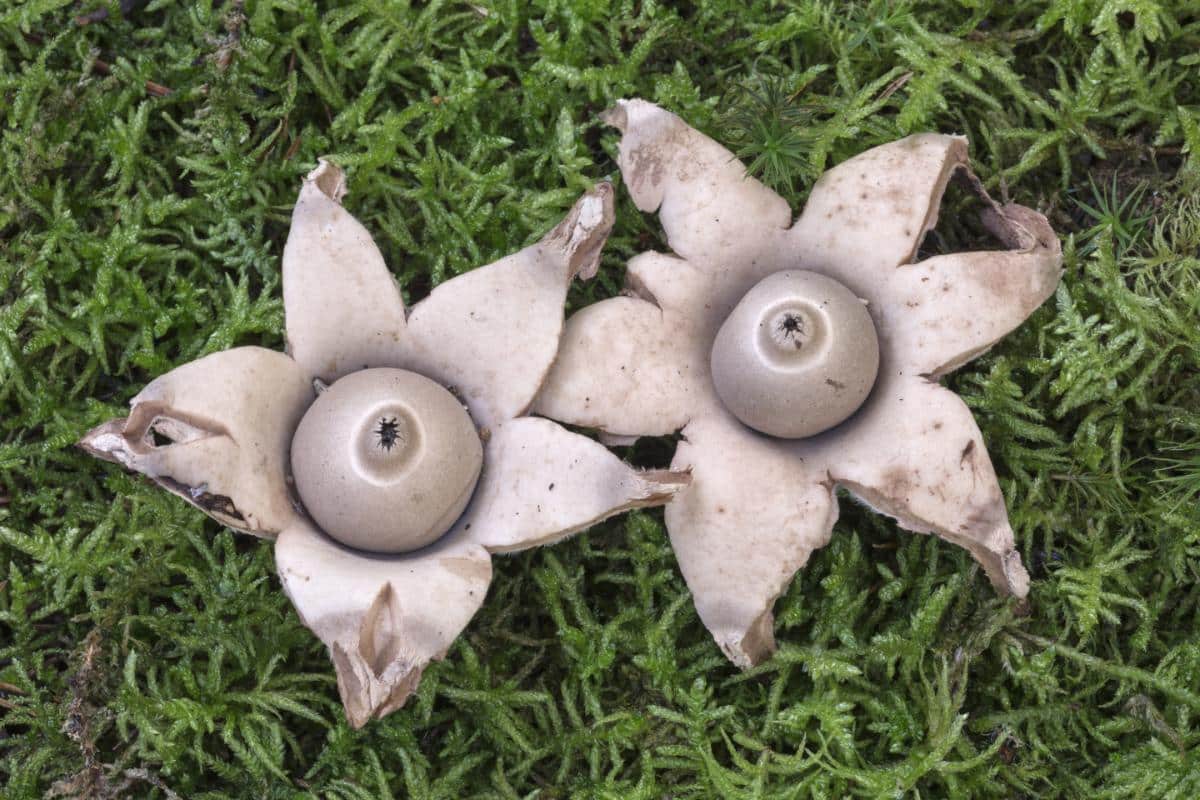
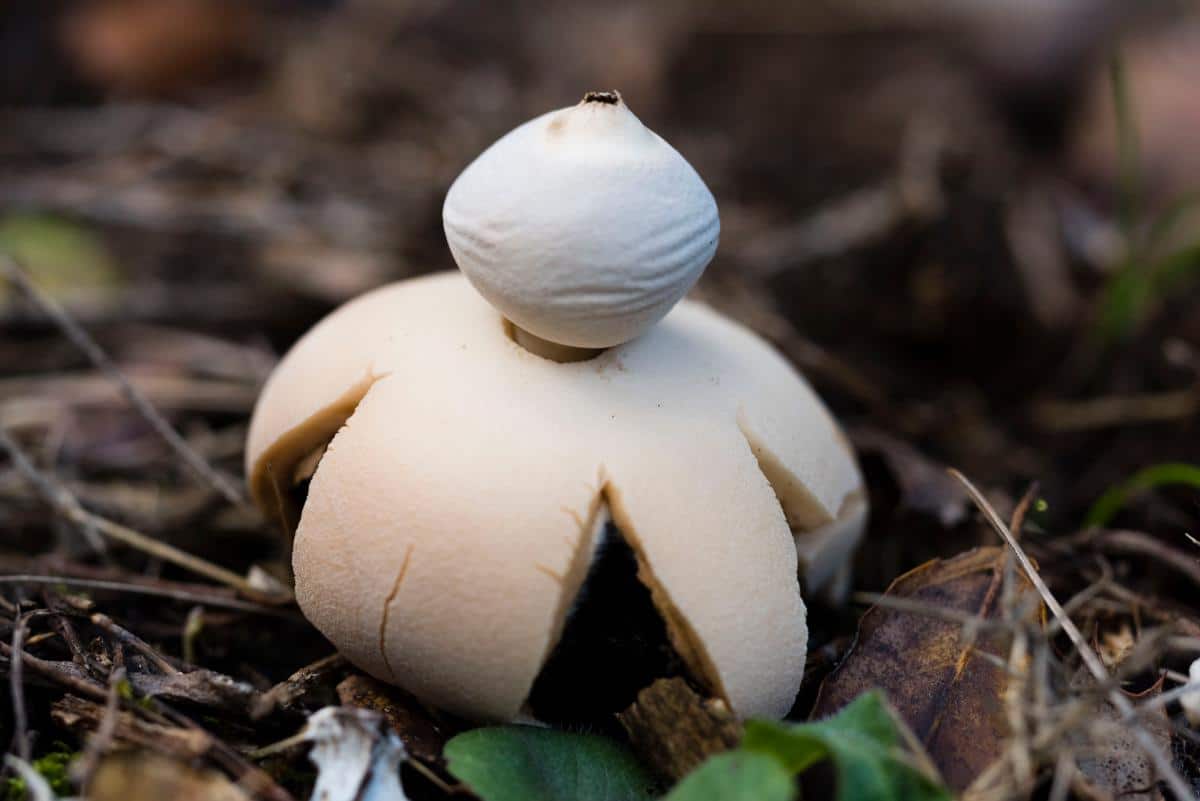
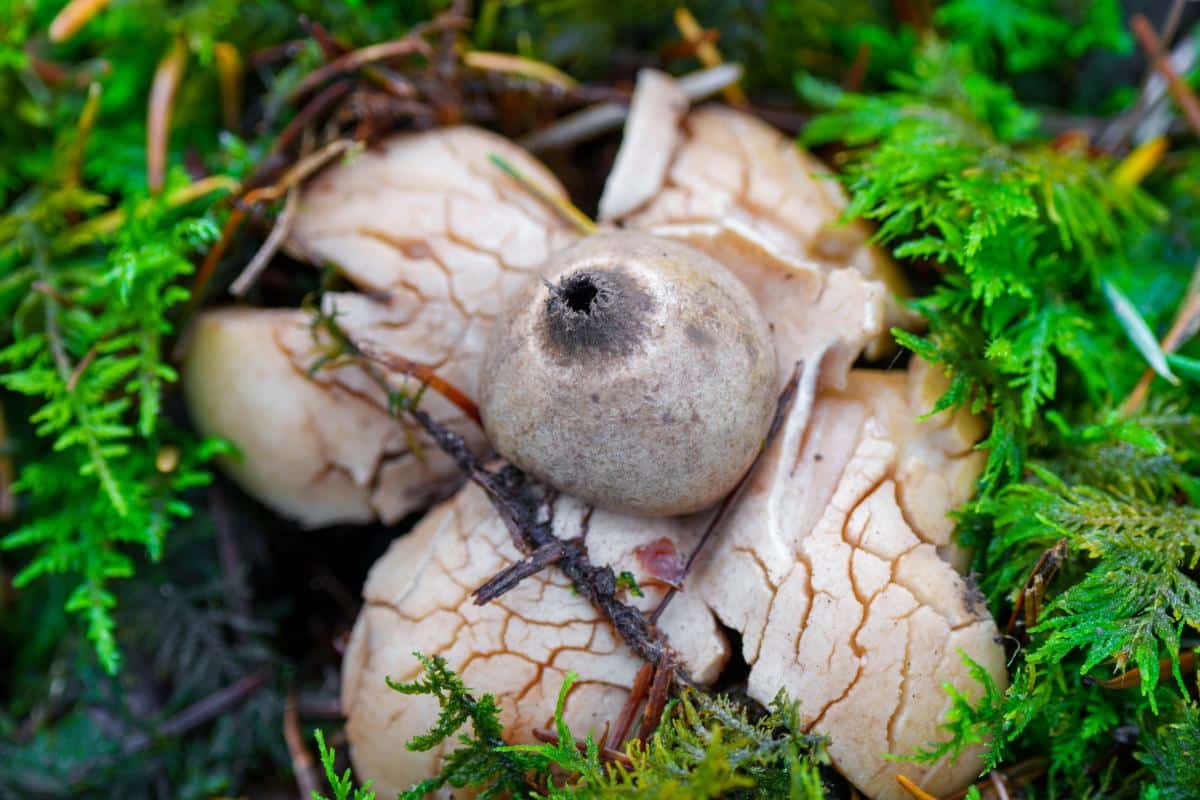
Common North American Earth Star Species
Rounded Earth Star (Geastrum saccatum)
The rounded earthstar, also known as the star of the land or sessile earthstar, is one of the most widespread earth star species in North America. It starts out as a tiny round ball with a pointed tip. The outer skin peels back as it matures and creates 4-9 arms. It looks a bit like an acorn nestled in a small bowl. It typically measures .75-2 inches across when fully expanded. The arms are triangle-shaped, buff to yellow-brown colored, and the inner spore sac is smooth and tan to brown or purplish.
Rounded earthstars have a distinct circular ridge or depression surrounding their central pore sac. This helps distinguish them from other similar species. They also only attach to the ground in one spot instead of over a wide expanse. This earthstar grows scattered or in clusters and often appears around stumps or in leaf litter under hardwoods and conifers.
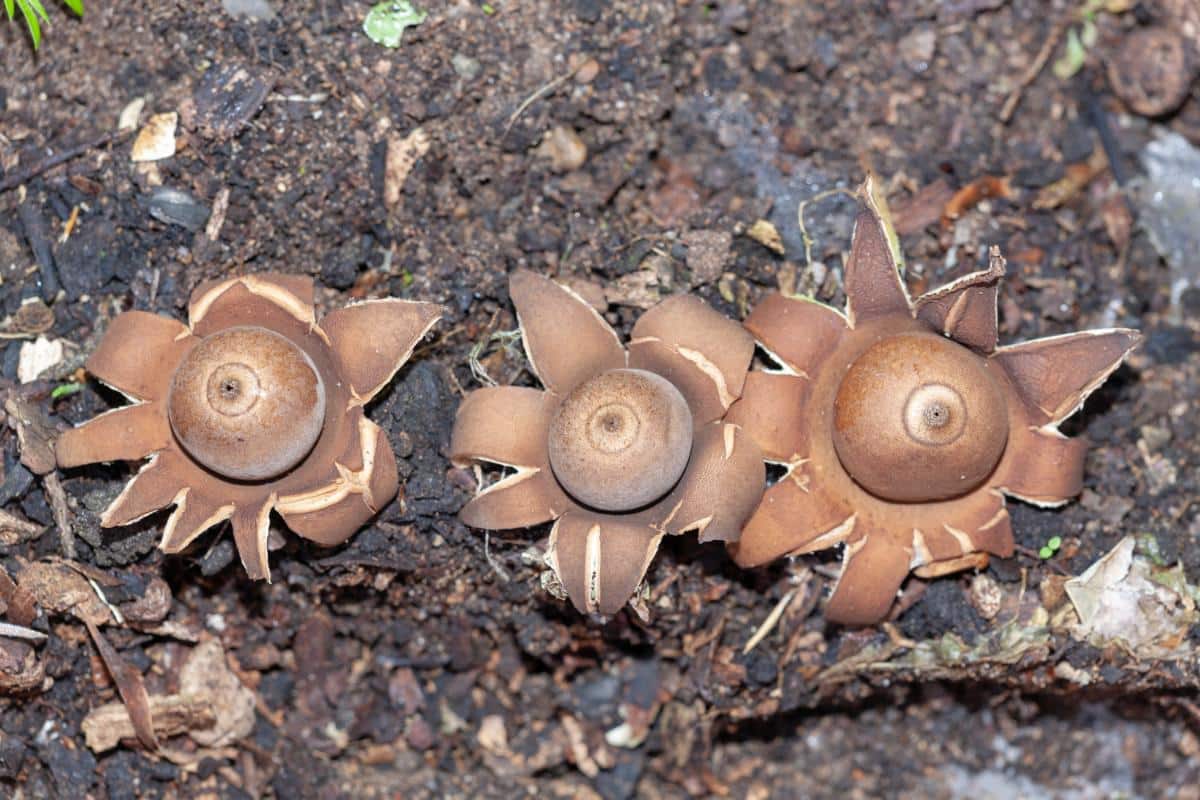

Collared Earth Star (Geastrum triplex)
The collared earthstar is the largest member of the Geastrum genus in North America. It is also extremely widespread in North America. It’s also commonly known as the saucered earthstar and triple earthstar. The earth star starts as a small, onion-shaped ball before opening up and creating 4-8 pointed arms (rays). The arms are very thick and fissure and crack as they spread. They measure 2-4 inches across when fully expanded.
As the arms grow, they break from the body and look like legs holding up a saucer. When fully mature, this earthstar resembles a small stool with legs and a saucer on top holding a rounded ball. Or, at least, it usually does. Sometimes, to the aggravation of mushroom collectors, the legs don’t entirely break away to form a neat saucer, and this makes it harder to identify.
The central pore sac has a distinct fuzzy, pointed beak or tip that sets it apart from other earth star species. This feature is especially helpful for identification when the mushroom is not in the familiar saucer shape. The collared earth star ranges from pale brown to grayish-brown, and there is usually a paler-colored ring around the pointed tip. Like the rounded earth star, it also attaches to the ground at a single point at its base. This species is commonly found in hardwood forests growing near well-rotted tree stumps.
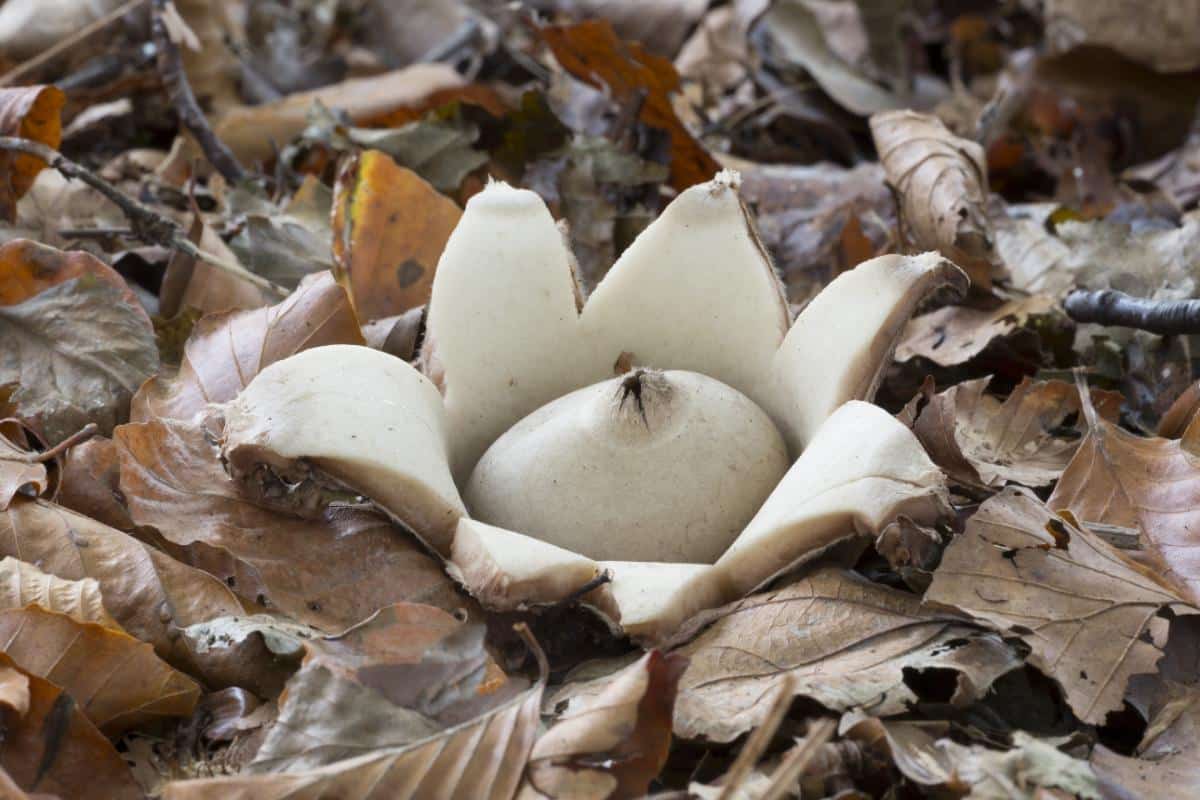
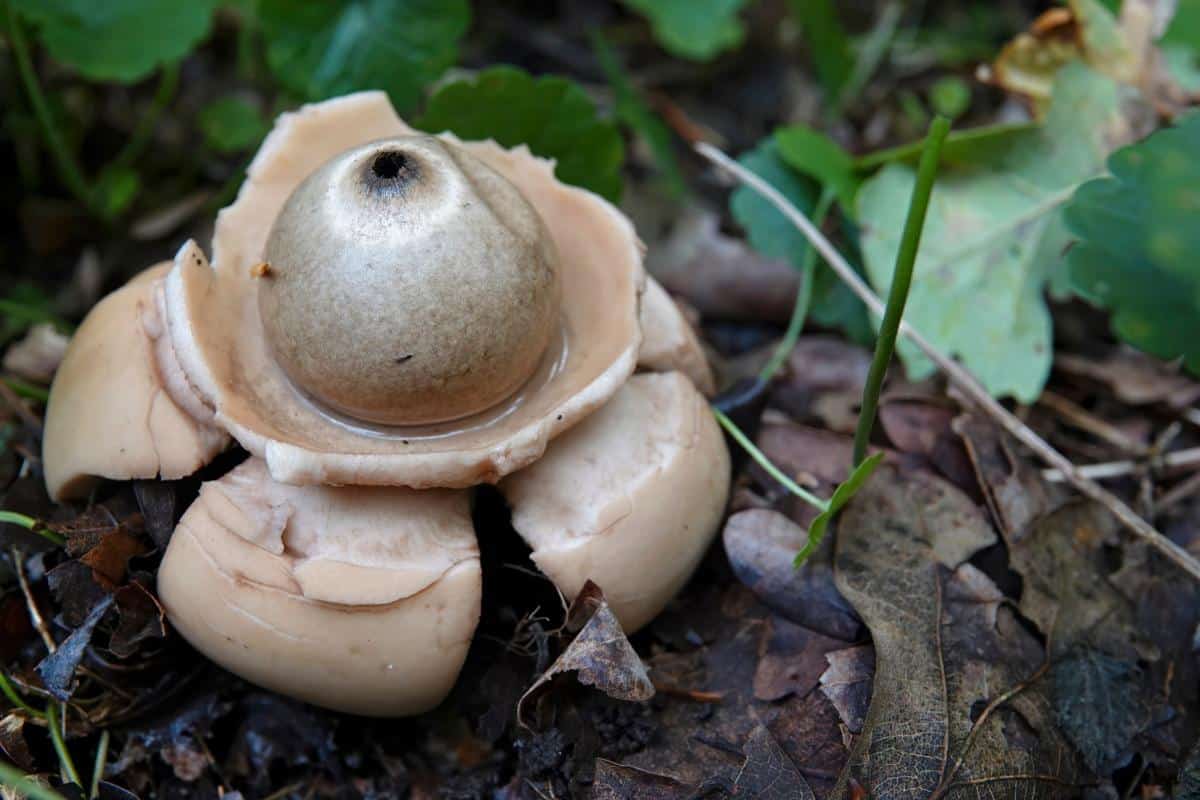
Reddening Earth Star (Geastrum rufescens)
This earthstar, also known as the rosy earth star, splits into 5-8 pointed rays that spread out flat on the ground. These rays typically measure 2-4 inches across when fully expanded. The central spore sac is rounded to pear-shaped and sits atop a short stalk. The mushroom earns its common name from its characteristic reddish-brown coloration, which intensifies as it ages or when bruised. The inner surface is darker and often develops a pinkish-to-reddish hue.
There are several key points that make this earthstar easy to differentiate from others. Its pinkish color is one. Its arms are also quite thick, and there is no depression or groove around the opening of the spore sac. Lastly, the base of the mushroom is covered in white mycelium that breaks off in clumps. It grows alone or in groups under conifers and hardwoods.
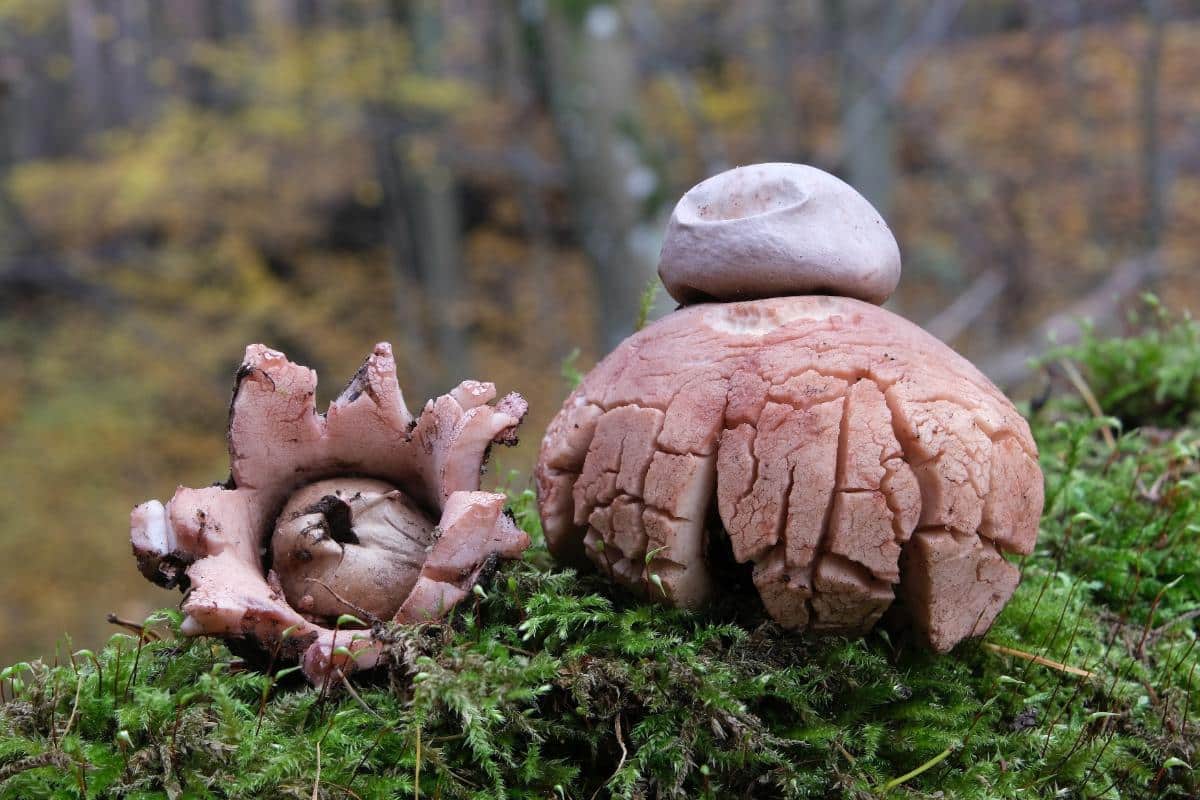
Fringed Earth Star (Geastrum fimbriatum)
The outer layer of the fruiting body splits into 5-8 rays that spread out on the ground, usually with a downward curve. They typically measure between 1-2 inches across when fully expanded. The central spore sac is rounded, 0.4-0.8 inches in diameter, and sits atop these rays. Its most distinguishing feature is the fringed or fibrillose opening (peristome) at the top of the spore sac, which gives it its species name “fimbriatum.” It grows on the ground around hardwood trees across eastern North America. This earthstar is not considered edible due to its tough texture.
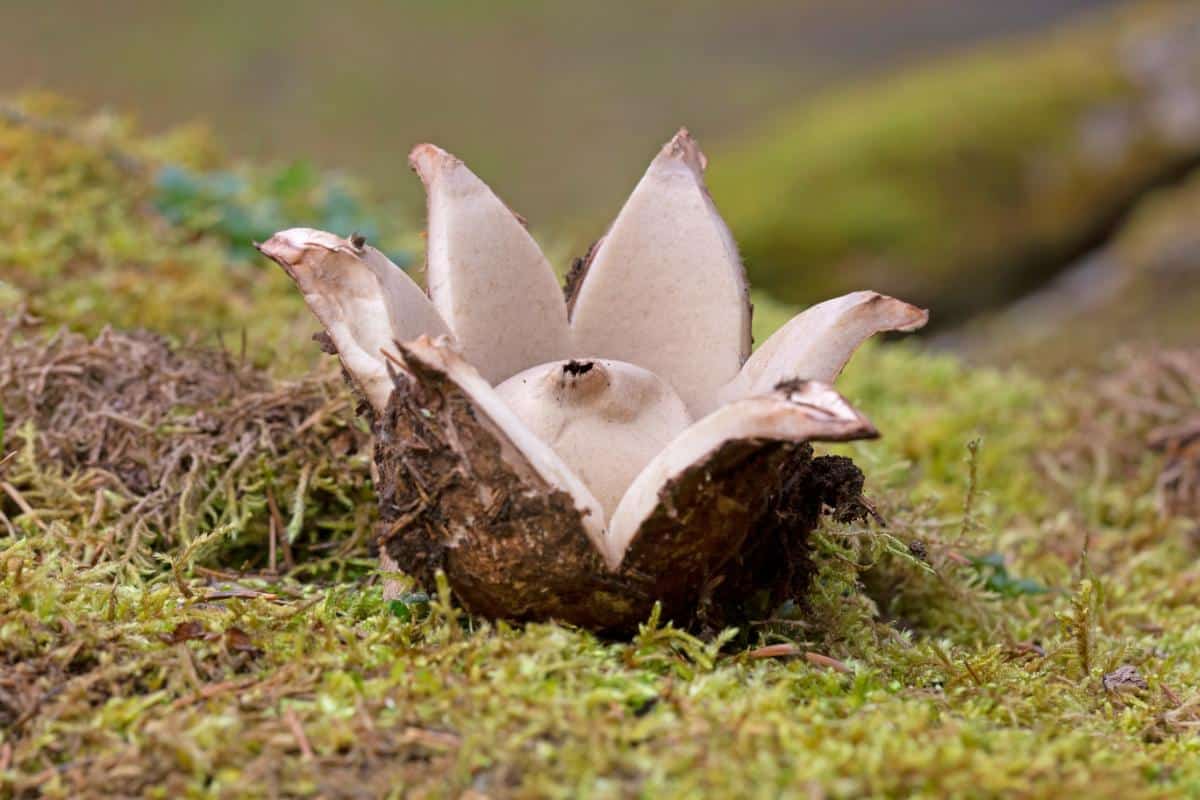
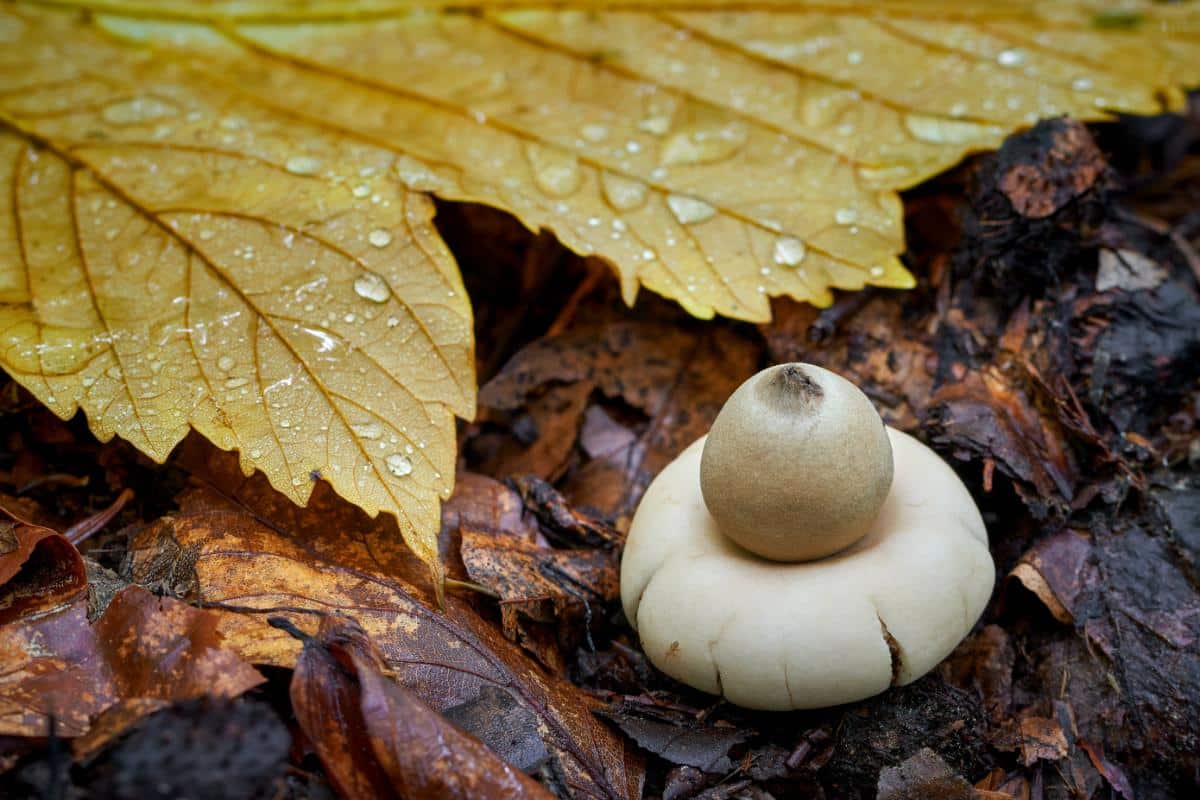
Beaked Earth Star (Geastrum pectinatum)
This mushroom is tan with a star-shaped outer layer that splits into 5-9 rays, which spread out and lift the spore sac off the ground. The spore sac is typically 0.4-0.8 inches in diameter and grayish-brown to purplish in color. It has a pronounced conical beak around the spore hole that is finely grooved or “combed” looking. The most distinctive feature, though, is the stalk beneath the spore sac that lifts it up and off the main body. This earthstar fungus has a wide distribution across North America.
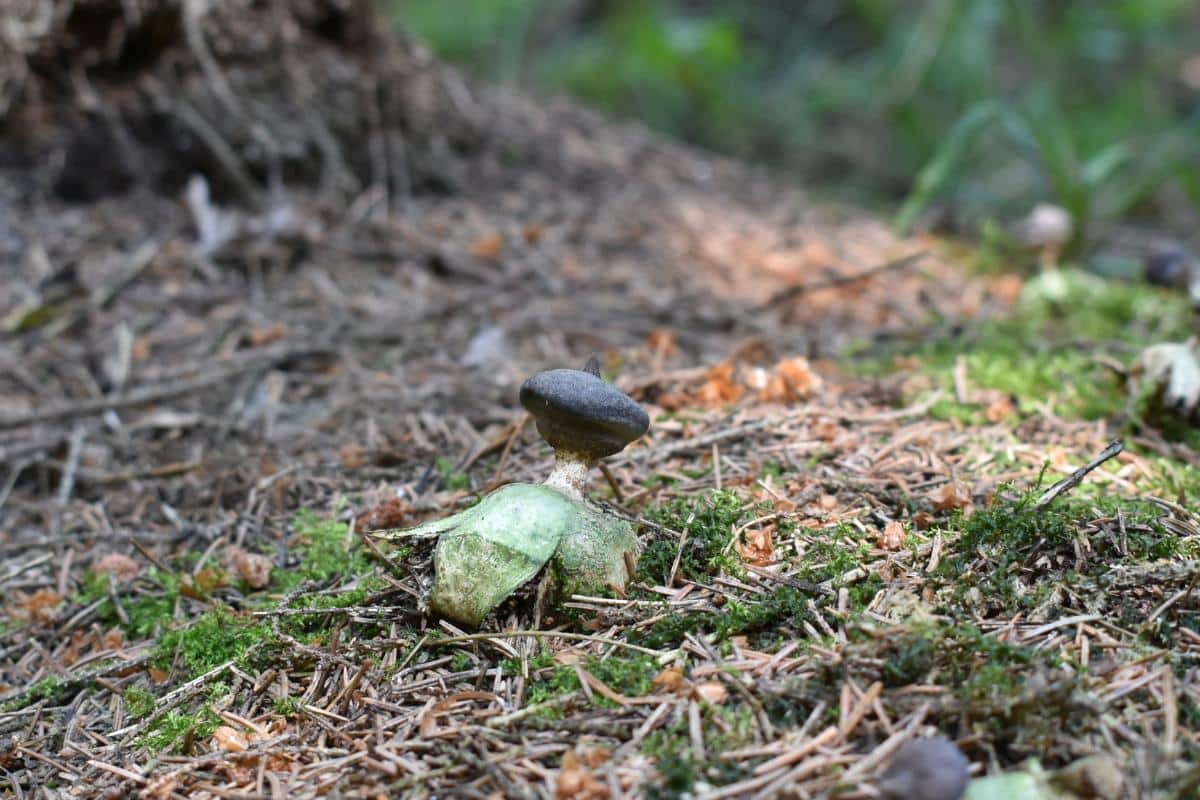
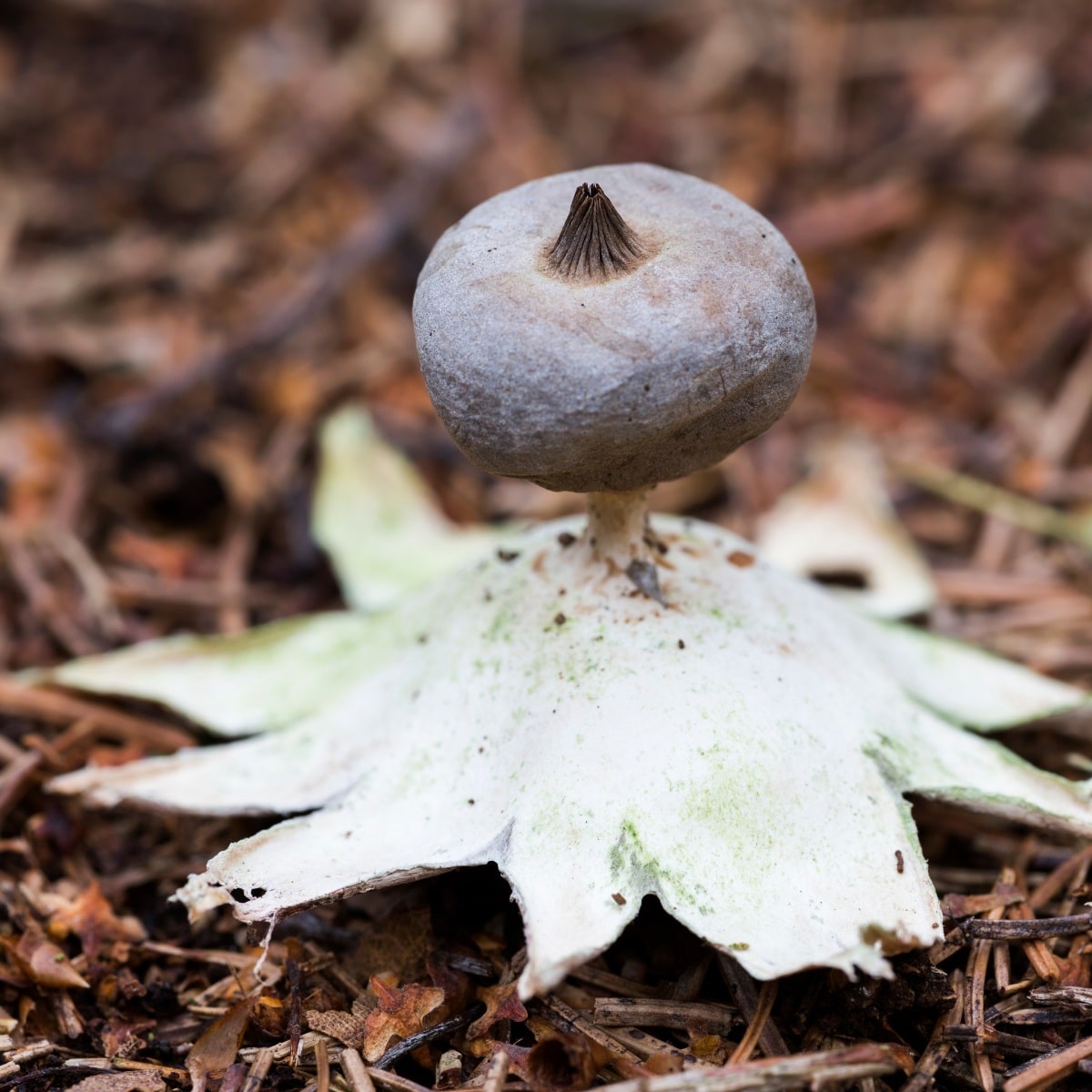
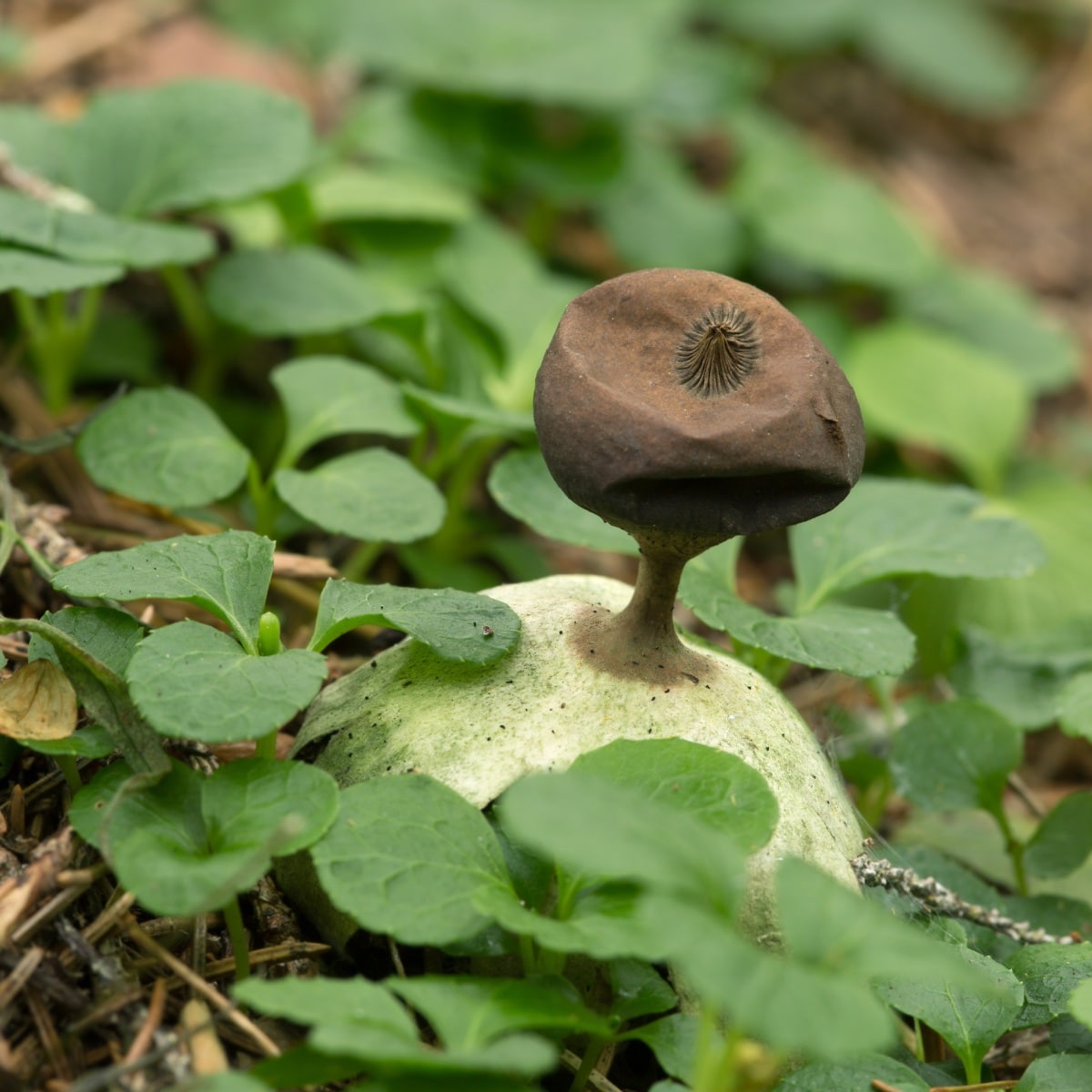
Saltshaker Earth Star (Myriostoma coliforme)
Also commonly known as the pepper pot or colander earthstar, identification of this mushroom is relatively straightforward due to its unique appearance. The fruiting body initially develops underground as a spherical structure, typically 1.2 to 2.4 inches in diameter, just like other earthstars. As it matures, the outer layer splits into 7 to 14 star-like rays that spread out and lift the inner spore sac.
The spore sac is 0.8 to 1.6 inches across and has multiple small, round pores on its surface, resembling a pepper shaker or colander, hence its common names. This species thrives in well-drained, sandy soils and is often found in deciduous or mixed woodlands, particularly those with oak trees. The saltshaker earthstar is widespread but is scattered and uncommon in North America, except in New Mexico, where it is quite common.
Myriostoma calongei looks similar to the saltshaker earthstar and also occurs only in New Mexico in the United States.
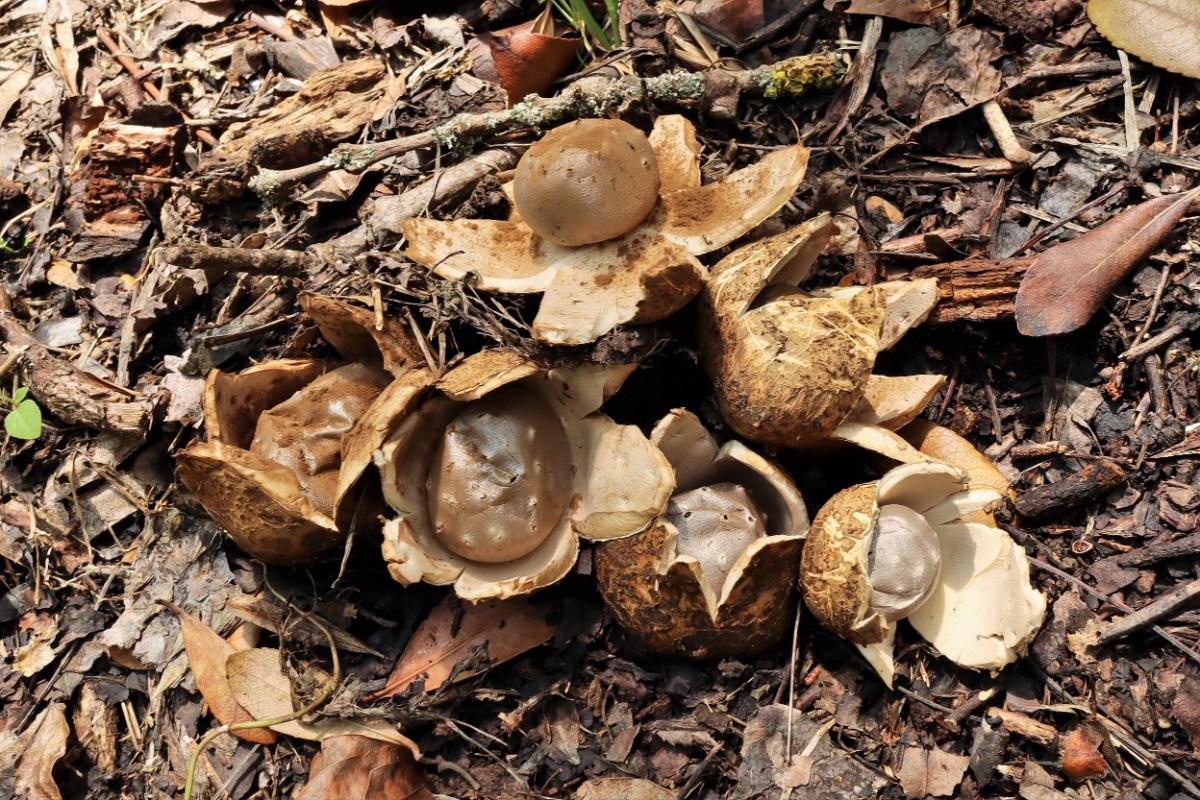
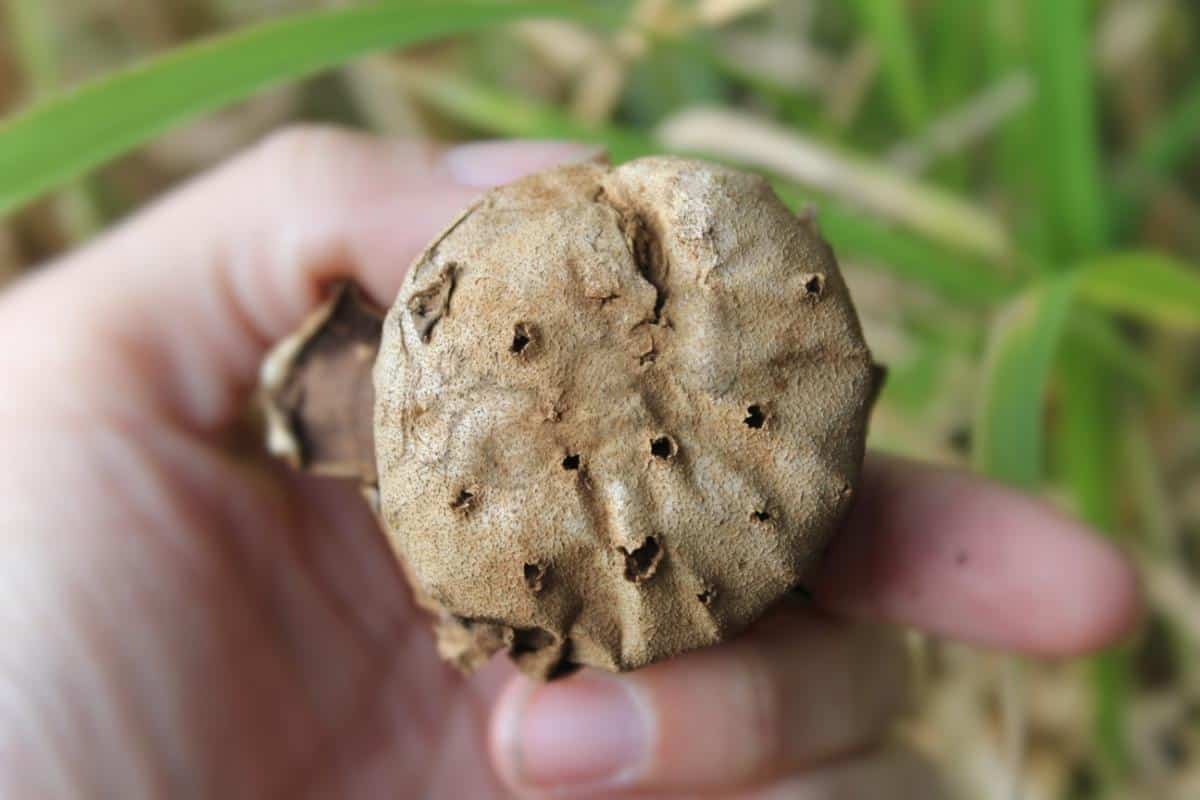
False Earth Star Mushroom Species
Barometer Earth Star (Astraeus hygrometricus)
**This species may not occur in North America. Recent studies suggest it is only known from southern Europe. However, for a long, long time, all false earth stars were classified under this single name, so it is still commonly found in guides and identification books. The species in N. America are still being sorted out and this is likely a species complex. The other 3 false earth stars in this guide are the current division of N. American Astraeus species.
** Not everyone agrees with the new names based on the studies, and with good reasons. Check out Kuo’s response for a straightforward assessment of the Phosri et al. paper that separated out the species.
The barometer earthstar (aka hygroscopic earthstar) is one tough mushroom; it grows in dry, desert-like environments and areas with sandy, nutrient-poor soil. They are able to do this because the star rays open and close in response to humidity. This incredibly neat adaptation allows them to conserve moisture in areas where rainfall is limited.
This earthstar grows up to 4 inches in diameter and is grayish-brown on the outside arms. The inner spore sac is buff to medium brown and has a rough or hairy surface. Typically, there are 6-12 pointed arms, and they are usually slightly cracked across the upper surface.
This mushroom is a traditional delicacy in parts of India, Nepal, Bengal, and Japan, where it appears during monsoon season.
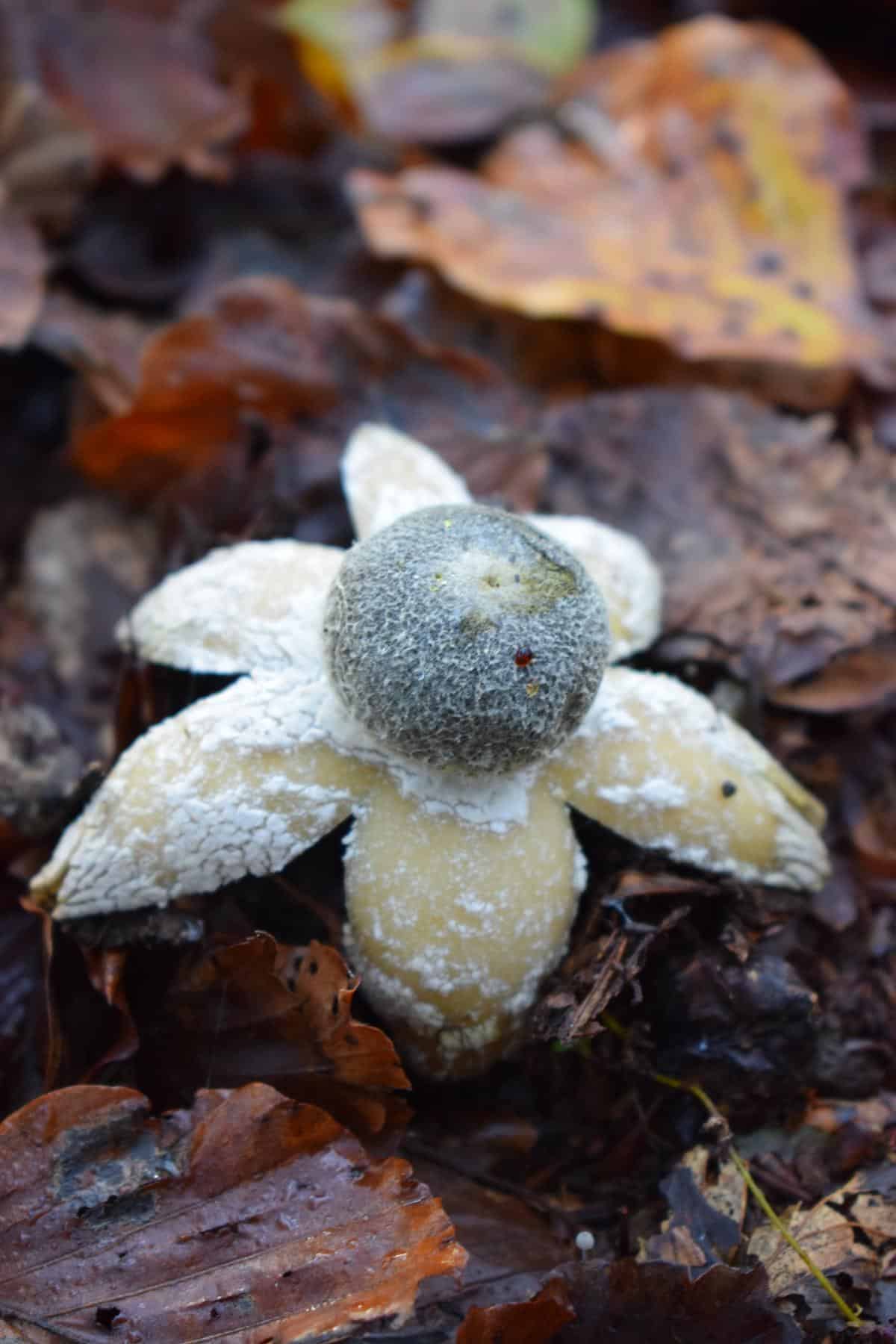
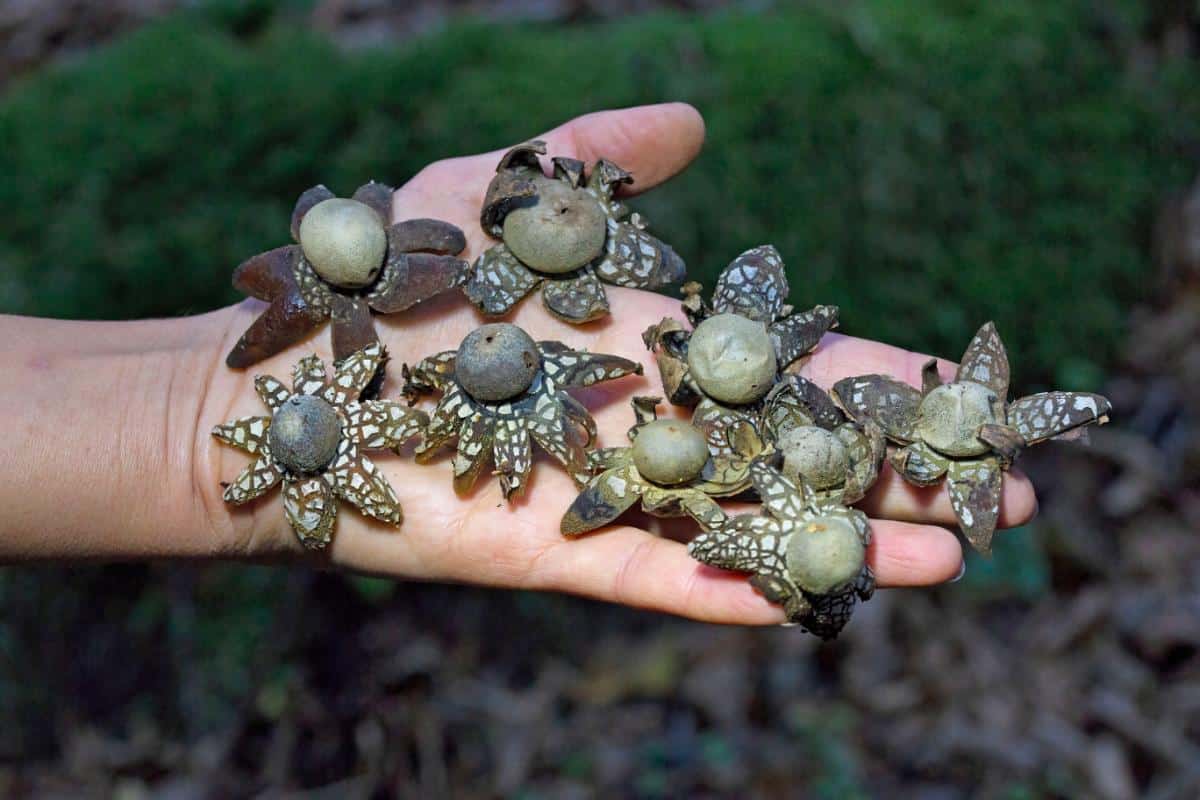
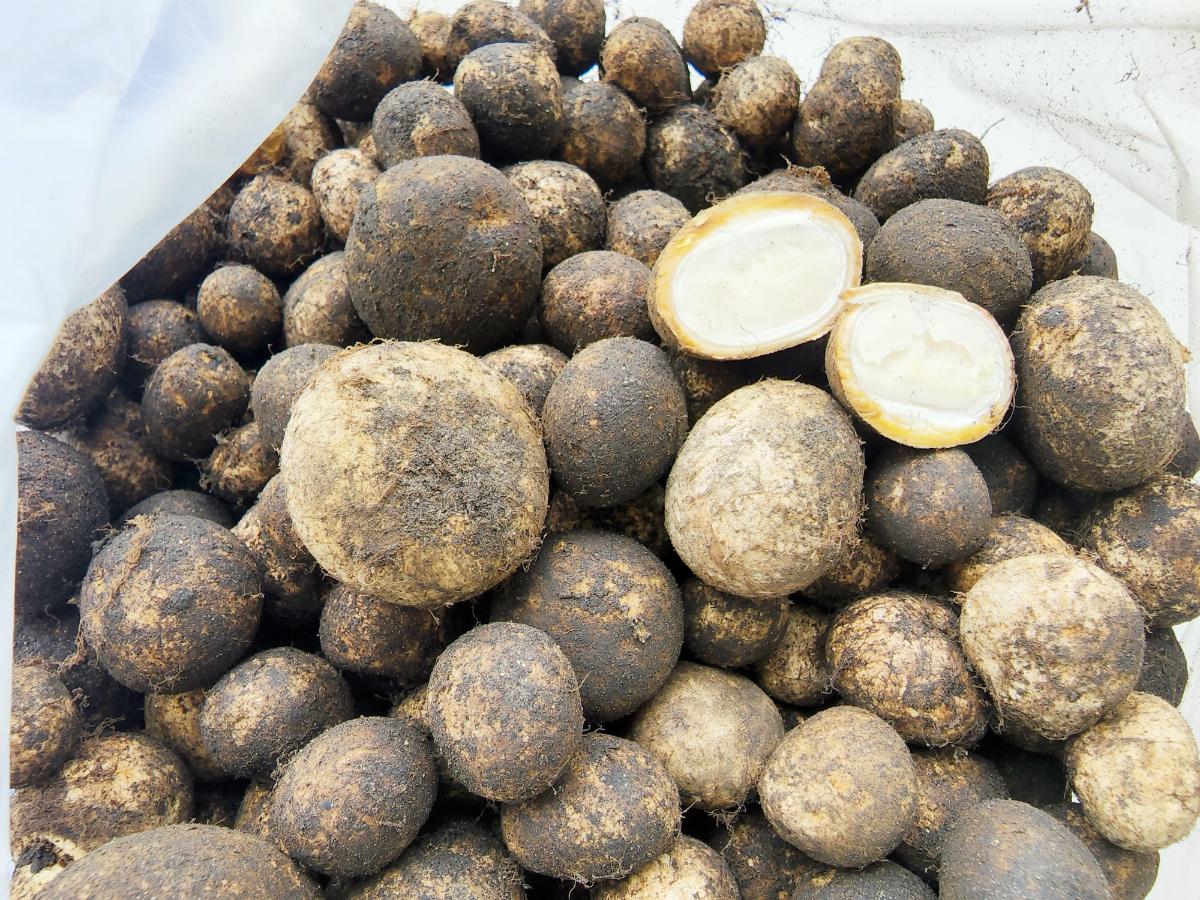
Giant Hygroscopic Earthstar (Astraeus pteridis)
This false earth star occurs in the Pacific Northwest and possibly further. The outer arms (rays) of this species measure between 1 to 3 inches across when fully expanded – the entire mushroom ranges between 2-6 inches wide, making it the biggest of the false earth stars. The body splits into 6 or more rays, which then curl back and lift the inner spore sac, which is typically 0.5 to 1 inch in diameter. The spore sac is pale brown to grayish.
They are typically found in sandy or well-drained soils, often near the roots of conifers or hardwoods. The best time to search for them is during the fall or after periods of rain when they are more likely to be open and visible. They are not edible due to their tough texture.
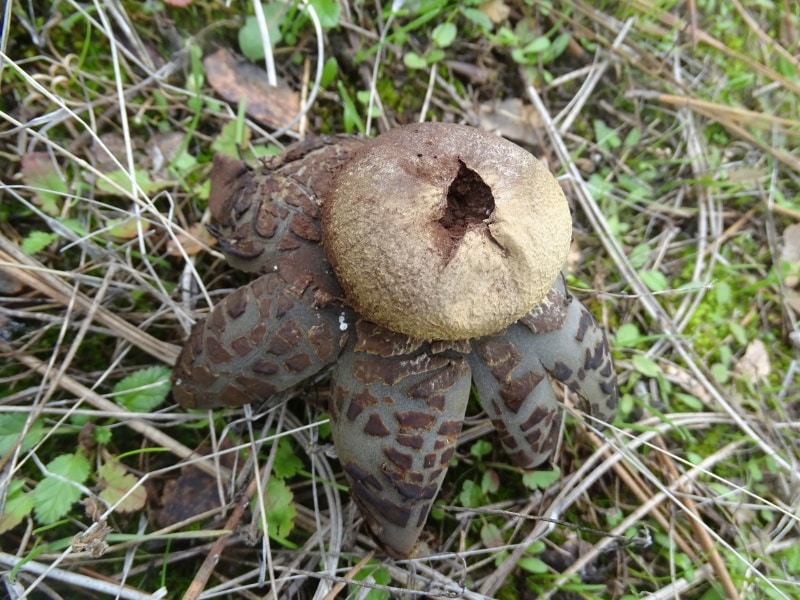
Morgan’s Earth Star (Astraeus morganii)
This mushroom occurs in the central to southern US and into Mexico. It typically measures between 1 to 2 inches in diameter when closed and expands to 2 to 4 inches across when fully open. It has a round central spore sac surrounded by a star-shaped outer layer that splits open as the fungus matures. The outer layer is thick and leathery, with a rough, earth-colored exterior that helps camouflage the fungus on the forest floor. The inner spore sac is typically grayish-brown. It is not considered edible due to its tough texture.
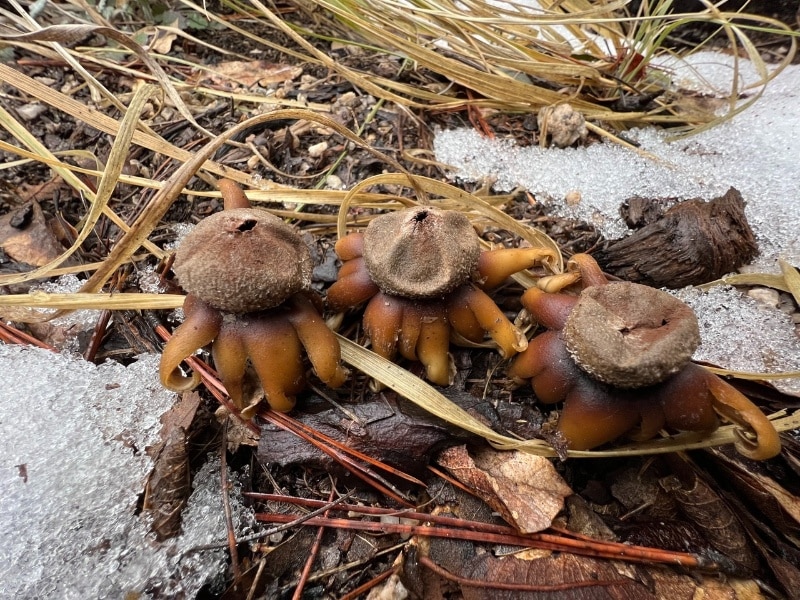
Smith’s Earth Star (Astraeus smithii)
Smith’s earthstar grows in the northern to central United States. In its unopened state, this earthstar is a very small, round ball measuring approximately 0.4 to 0.8 inches in diameter. The outer layer is thick and leathery, with a grayish-brown coloration. As the fungus matures, this outer layer splits open in a star-like pattern, forming 5 to 8 rays that spread out and curve downward. When fully expanded, the earthstar can reach a width of 1.2 to 2 inches across.
The inner spore sac is round and sits directly on the rays without a stalk. It measures about 0.4 to 0.6 inches in diameter and has a papery texture. The color ranges from light gray to pale brown and features a small, fringed opening at the top. This mushroom is typically found in sandy or well-drained soils in open woodlands or grasslands.
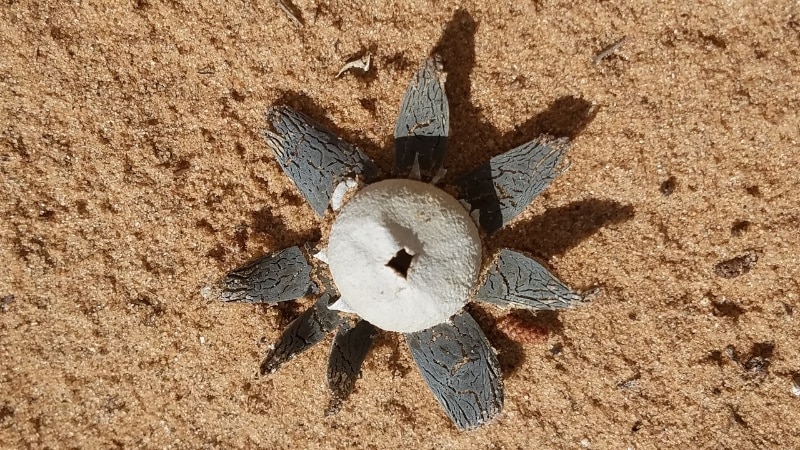
Earth Star Mushroom Lookalikes
Earth stars are pretty distinctive, but they can be confused with other fungi, especially puffball mushrooms. However, once the earth star opens up, it is quite easy and obvious to tell it apart from a puffball or any other mushroom.
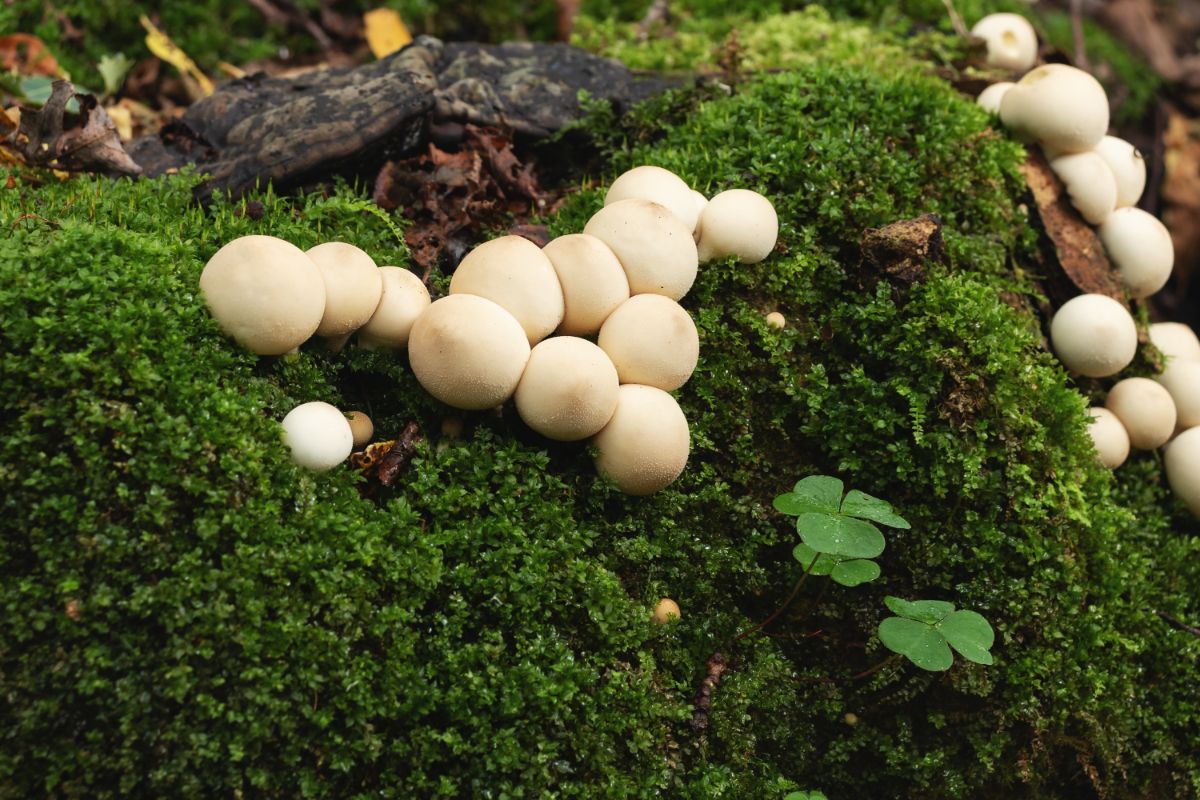
Earthballs also look similar to earth stars. Like with puffballs, as soon as the earth star opens up, it’s obviously only that. Earthballs remain rounded and usually have dark spores from the start.
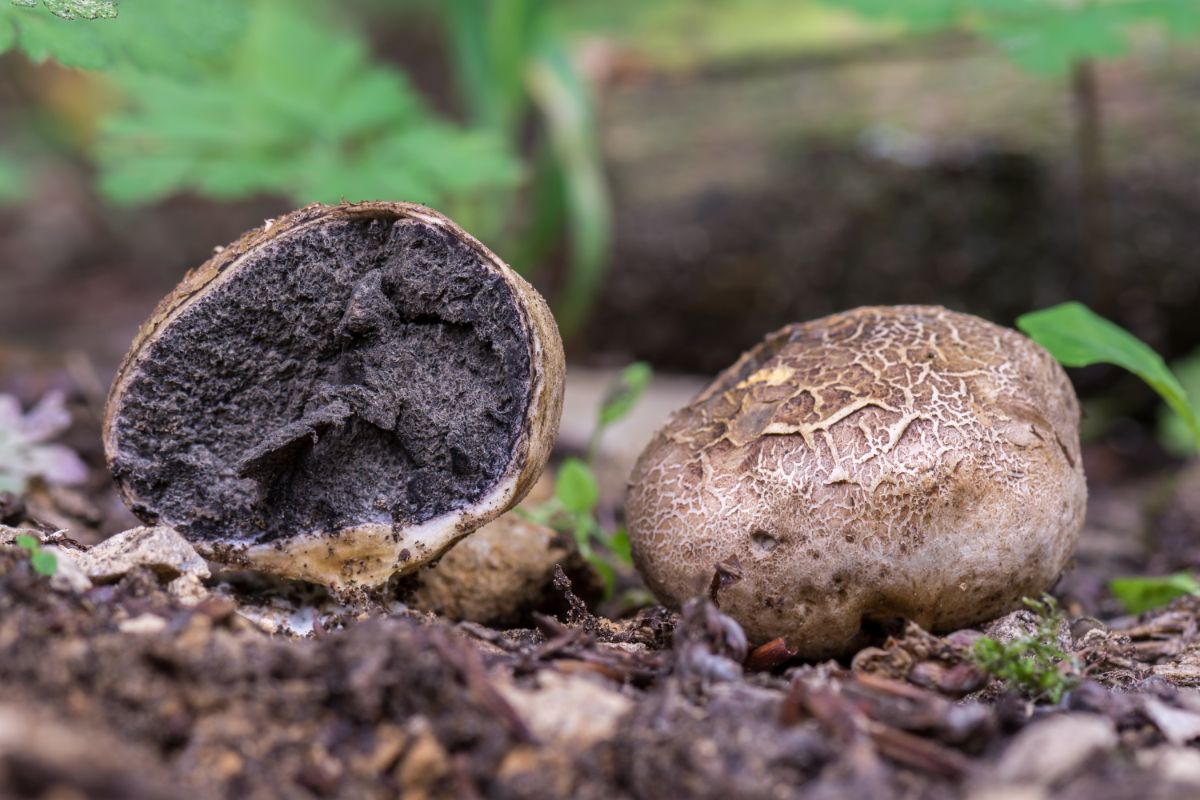
Historical and Traditional Uses of Earth Star Fungi
The Blackfoot Native American tribe calls earth stars “ka-ka-toos,” meaning “fallen stars.” They believe that these mushrooms fall from the sky during supernatural events.
In Native American medicine, earth stars have been used for their potential healing properties. The Cherokee, for instance, would place the fruiting bodies on the navels of newborn babies after childbirth, leaving them there until the withered umbilical cord fell off. This practice was believed to serve both prophylactic and therapeutic purposes, although the specific benefits are not well-documented.

Traditional Chinese medicine has also incorporated earth stars into its practices. Geastrum triplex, in particular, has been used to reduce inflammation in the respiratory tract, as well as to help stop bleeding and decrease swelling.
The Baiga and the Bharia of Madhya Pradesh, two forest tribes from India, reportedly use the fruit bodies medicinally. They blend the spore mass with mustard seed oil and use it as a salve for burns.
In some parts of the world, earth stars have found practical uses beyond medicine. In Tanzania, mature fruiting bodies of Geastrum triplex and G. saccatum have been used in honey harvesting. The spores are released directly into beehives, temporarily anesthetizing the bees for about 30 minutes. This natural anesthetic doesn’t cause the bees any harm and keeps them calm. This ingenious technique allows for easy honey collection.
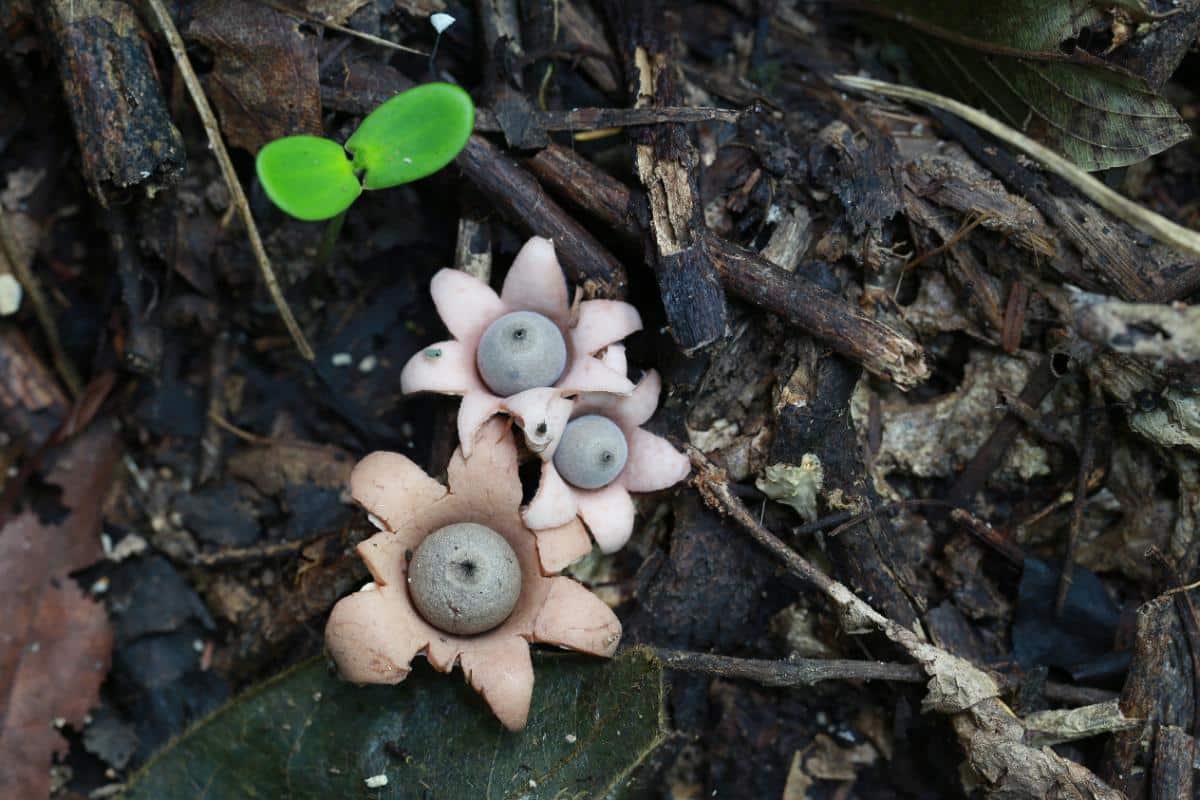
Medicinal Properties of Earth Star Fungi
Earth star mushrooms contain several bioactive compounds. These include various chemical derivatives of ergosterol, a fungal sterol, as well as several fatty acids.
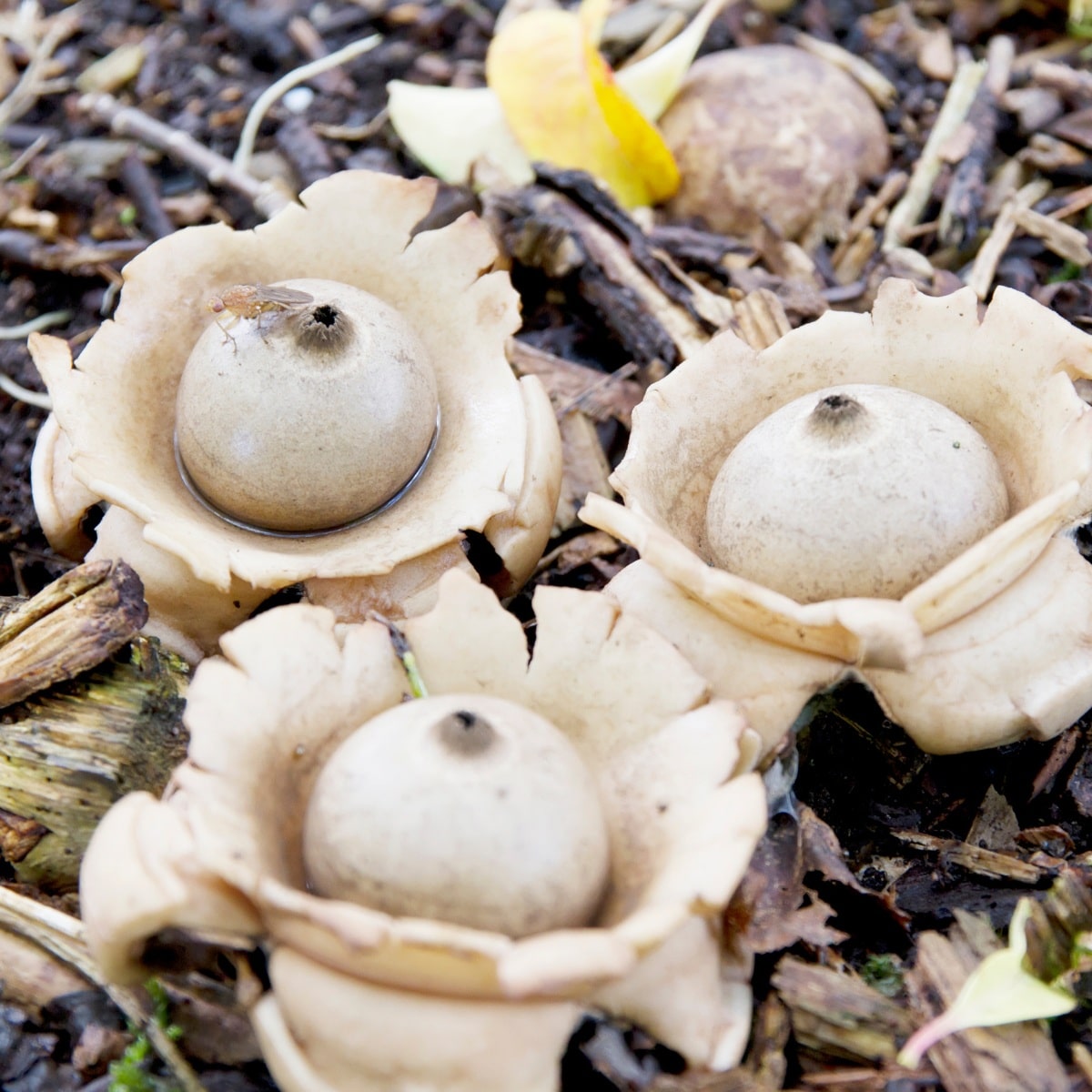
Common Questions About Earth Star Mushrooms
Are earth star mushrooms poisonous?
No, they are not poisonous. They also aren’t edible. But, they are stunningly cool to find!
Are false earth star fungi toxic?
False earthstar mushrooms are not poisonous. While most are not suitable for culinary use due to their unpleasant taste, they are harvested and eaten in some parts of Asia.
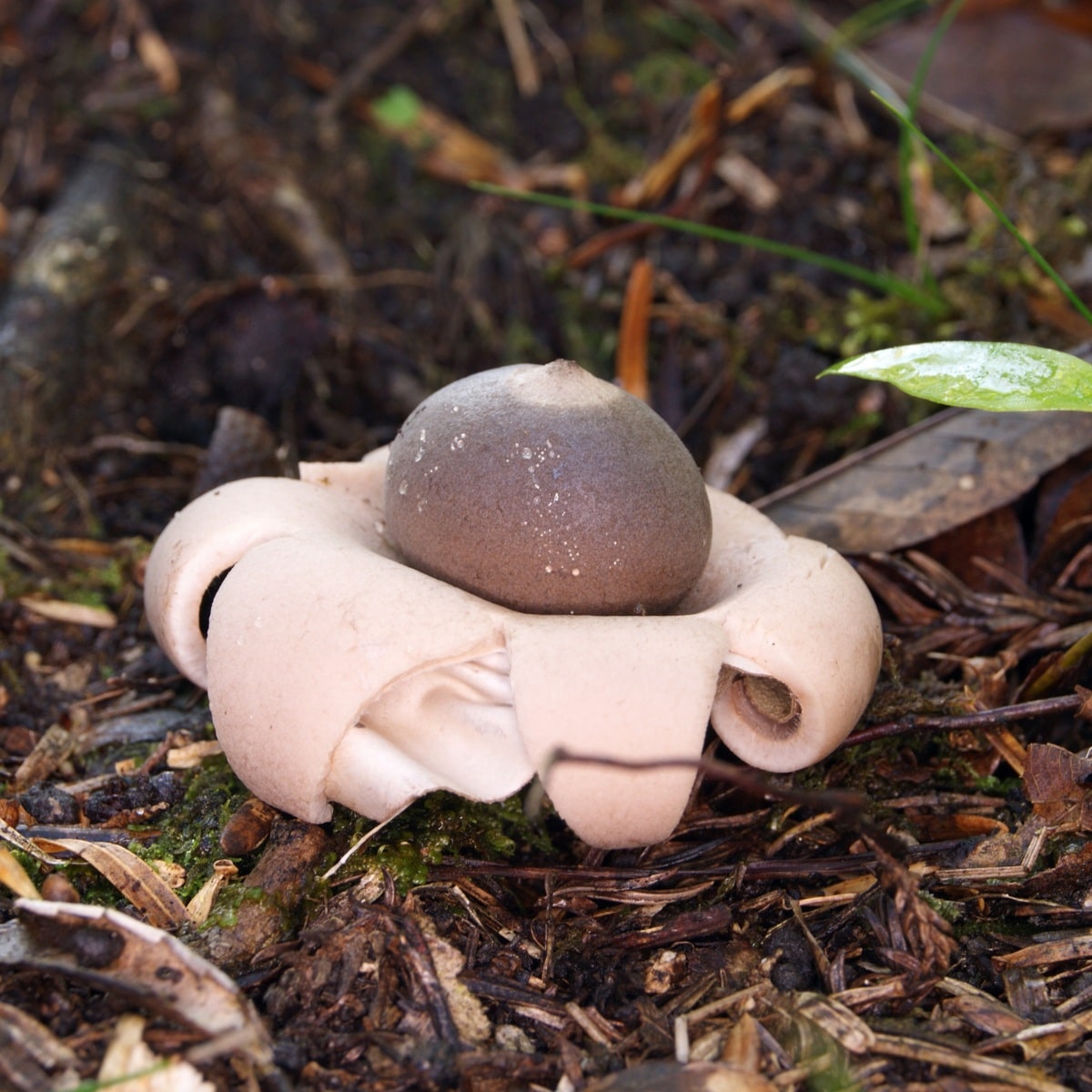

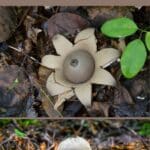
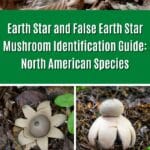
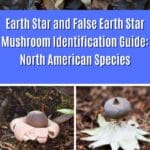
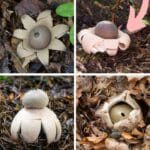




julie adickes says
found a couple earthstars, in westlake village, in the hills….
can’t identify, geastrum? astraeus? nice “daisy” opened “leaves”,
lighter rounded center. ??? any thoughts? dry, chaparral biome.
Jenny says
Very cool! If you want to submit photos of them to our facebook group, that would be great (make sure location includes state or province, i have no idea where or what westlake village is…) Make sure to read the guidelines first before posting https://www.facebook.com/groups/340690111324762